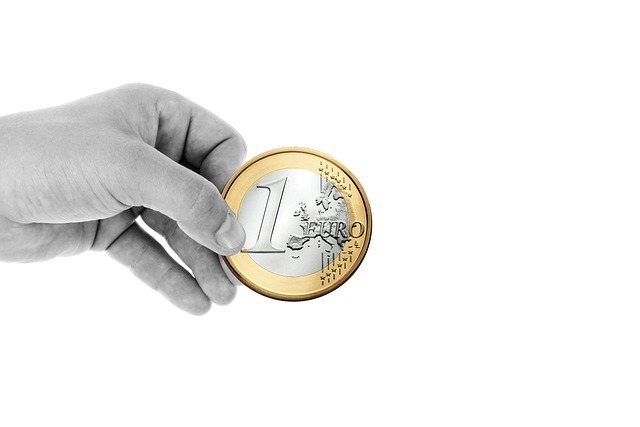Flow Coin Price Prediction 2030: 2025 Outlook and Long-Term Forecast
Author: Jameson Richman Expert
Published On: 2025-11-17
Prepared by Jameson Richman and our team of experts with over a decade of experience in cryptocurrency and digital asset analysis. Learn more about us.
Flow coin price prediction 2030 is a question many investors, developers, and NFT/gaming enthusiasts are asking as the Flow ecosystem matures. This article summarizes what Flow (FLOW) is, key price drivers, on-chain and macro metrics to monitor, and a set of quantitative scenarios (bear, base, bull) for FLOW price in 2030 — plus practical guidance on buying, trading, and managing risk using trusted exchanges and research resources.

Table of contents
- What is Flow and why it matters
- Primary drivers of FLOW price through 2030
- Key on-chain and market metrics to monitor
- Prediction methodology and modeling approach
- Flow coin price prediction 2030 — scenarios
- How to buy FLOW and trade safely
- Risk management and portfolio sizing
- Frequently asked questions
- Conclusion
What is Flow and why it matters
Flow is a blockchain designed for NFTs, games, and consumer applications — created by Dapper Labs, the team behind NBA Top Shot. Flow is architected for scalability and developer-friendly tooling, seeking to solve throughput and user experience problems common on general-purpose blockchains. For background, see the official Flow website (onflow.org) and the Flow entry on Wikipedia (Flow blockchain — Wikipedia).
FLOW is the native token used for network fees, staking, and on-chain governance. As Flow’s ecosystem grows — in gaming, marketplaces, and consumer apps — demand dynamics for FLOW can change significantly, which is central to long-term price projections.
Primary drivers of FLOW price through 2030
Several categories of drivers will influence Flow coin price prediction 2030. Below are the most impactful factors:
1. Ecosystem growth and real-world adoption
- Growth in games, NFT marketplaces, and consumer apps built on Flow.
- Large partnerships and exclusives (e.g., sports & entertainment IPs) that drive user traffic.
- Developer tools, SDKs, and easier onboarding for non-crypto users.
2. Tokenomics and supply dynamics
Token supply distribution, circulating supply, inflation schedule, and staking incentives directly affect price. Understand the total supply and expected unlocks to model future dilution.
3. Network performance and upgrades
Upgrades that improve TPS, reduce fees, or enhance composability will increase the network’s utility and attractiveness for projects, thereby increasing token utility demand.
4. Macro crypto market cycles and investor risk appetite
Bitcoin and Ethereum market cycles strongly correlate with altcoin performance. A sustained bull market can lift Flow significantly; conversely, prolonged crypto bear markets can cap upside.
5. Regulatory landscape
Regulatory clarity (or lack thereof) around token securities, NFTs, and on-ramping can speed or stall adoption and institutional flows into the space.
6. Liquidity and exchange listings
Access to liquidity on major exchanges increases retail and institutional participation. Listings on top-tier exchanges and availability in regional markets matter.
7. On-chain metrics and trading volume
Activity metrics (active addresses, transaction volume, gas fees, marketplace volume) are leading indicators of demand. For guidance on measuring trading and on-chain volume for other assets, you may find this practical guide helpful: how to check volume of stock — a step-by-step approach that can be adapted to crypto (check trading volume basics).

Key on-chain and market metrics to monitor
When forming a reliable Flow coin price prediction 2030, track these indicators regularly:
- Active addresses: growth indicates real user adoption.
- Daily transaction count: consistent increases suggest more utility.
- Marketplace volume: NFT and game secondary-market sales are direct demand drivers.
- Staked supply: higher staking reduces circulating supply and can be bullish.
- Exchange inflows/outflows: net inflows often precede selling pressure; monitor exchange activity.
- Developer activity: number of new projects, commits, and public releases.
For regional trading volume trends and macro insights that can be correlated with Flow trading activity, review research on trade volume patterns (example: Mexico trends & forecast) which offers methodology applicable to crypto order flow (trade volume trends and forecasting).
Prediction methodology and modeling approach
Sound predictions combine qualitative ecosystem analysis with quantitative modeling. Below are robust approaches you can apply to forecast the FLOW price in 2030.
1. Market-cap share model (top-down)
Estimate an expected total crypto market capitalization in 2030, then assign a plausible % market share to Flow based on ecosystem strength. Multiply then divide by projected circulating supply.
2. Adoption-driven revenue model (bottom-up)
Estimate on-chain revenue (fees, marketplace commissions) Flow could capture by 2030, then apply a revenue multiple (similar to valuation metrics in Web2) to arrive at token value implied by discounted cash flows of on-chain revenue.
3. Comparable growth multiples
Compare Flow to other chains by metrics like TVL, active users, and NFT volume, and apply growth multiples to current price levels.
4. Technical and on-chain signal integration
Incorporate on-chain momentum (transaction growth), accumulation patterns (long-term holders), and exchange flow dynamics to modulate estimates. Use scenario analysis to show sensitivity to major variables.
5. Scenario ranges and probability weights
Instead of a single-point forecast, produce a range with assigned probabilities (e.g., 40% base case, 30% bull, 30% bear). This communicates uncertainty and avoids false precision.
Flow coin price prediction 2030 — scenarios
Below are plausible scenarios for FLOW in 2030 using a market-cap share method combined with adoption assumptions. Circulating supply figures and macro market assumptions change over time; revise projections as new data becomes available.
Assumptions used for examples
- Projected total crypto market cap in 2030: conservative $3T, base $6T, bull $12T.
- Flow market share by 2030: conservative 0.03% (niche), base 0.12% (meaningful presence), bull 0.5% (major niche leader), extreme bull 1.2% (dominant NFT/gaming chain).
- Projected circulating supply (approximate): assume 1.25 billion FLOW (adjust as token emissions change—use the latest onflow tokenomic docs for precision).
Bear / Conservative case
Assumptions: $3T total crypto market cap, Flow market share 0.03% — market cap = $900M. With 1.25B circulating supply, price ≈ $0.72.
Rationale: Limited adoption, competition from other L1/L2 chains, weak developer traction, macro bear market conditions. Probability: 20–30% if regulatory or technology setbacks occur.
Base / Most-likely case
Assumptions: $6T market cap, Flow market share 0.12% — market cap = $7.2B. With 1.25B supply, price ≈ $5.76.
Rationale: Moderate adoption in gaming and NFTs, several strong partnerships, steady developer activity. Probability: 40–50% if Flow captures a steady slice of the entertainment & NFT economy.
Bull case
Assumptions: $12T market cap, Flow market share 0.5% — market cap = $60B. Price ≈ $48.
Rationale: Flow becomes a leading consumer blockchain for NFTs and games, with mainstream IPs and high-volume marketplaces onboarding users. Probability: 15–25% in an extended crypto bull market scenario.
Extreme bull / Outlier case
Assumptions: $12T market cap, Flow market share 1.2% — market cap = $144B. Price ≈ $115.
Rationale: Game-changing network effects, major institutional adoption, cross-chain integrations, and viral consumer apps. Probability: 5–10% — low-probability, high-upside.
Note: These numbers are illustrative. Real-world prediction must use updated supply data and market cap forecasts as 2030 approaches. For precision, consult tokenomics documentation and updated circulating supply figures.
Example calculation (transparent)
- Total crypto market cap assumed = $6,000,000,000,000 (6T).
- Flow market share assumed = 0.12% => Flow market cap = 0.0012 * 6T = $7.2B.
- Circulating supply assumed = 1,250,000,000 FLOW => 7,200,000,000 / 1,250,000,000 = $5.76 per FLOW.
This type of transparent calculation lets you plug in different assumptions and see how the price responds.

How to buy FLOW and trade safely (practical steps)
If you decide to buy FLOW after your research, follow a secure, stepwise approach:
- Open an account on a reputable exchange. Popular exchanges supporting FLOW include Binance (fast fiat on-ramps) — register here: Binance registration (referral).
- Consider alternative or regional platforms for liquidity or listing variety: MEXC (MEXC registration) and Bitget (Bitget referral).
- For advanced traders, Bybit provides spot and derivatives access — register here: Bybit invite. If you need a step-by-step on closing spot trades on Bybit, here's a practical guide: how to close a spot trade on Bybit.
- Use secure wallets for long-term holdings (hardware wallets recommended). For active trading, keep only required funds on exchanges and transfer the rest to cold storage.
- Set limit orders or dollar-cost averaging (DCA) schedules rather than market-timing, unless you are an experienced trader.
When placing trades, double-check token contract addresses and beware of scams or fake token listings. Track fees and tax implications in your jurisdiction.
Risk management and portfolio sizing
Crypto is high-risk and volatile. Use the following risk controls:
- Position sizing: Limit any single altcoin exposure (commonly 1–5% of total portfolio depending on risk tolerance).
- Stop-losses & targets: Use protective stops for short-term trades; set profit targets and re-evaluate as positions move.
- Diversification: Diversify across sectors (Layer-1s, stablecoins, infra tokens) to reduce idiosyncratic risk.
- Research refresh: Revisit the thesis quarterly — monitor developer activity, partnerships, and tokenomics changes.
- Liquidity planning: Maintain an emergency stablecoin reserve to rebalance without being forced sellers in a crash.
Monitoring, signals and trading guidance
Combine fundamental monitoring with technical signals. Use market depth and order flow tools, and keep an eye on regional trading trends and volumes. For a deeper view of trade volume forecasting methodologies that can inform your Flow trading strategy, see this trade volume trends research (trade volume trends & forecasting).
Additionally, for traders using Bybit, a practical guide on executing and closing spot trades will reduce operational errors: how to close a spot trade on Bybit.
Practical example: dollar-cost averaging (DCA) plan
- Decide exposure: allocate 2% of portfolio to FLOW.
- Split allocation into 8 equal parts to buy weekly over two months.
- Review after 3 months: if adoption metrics improve, consider adding; if they weaken, pause or reduce.

How on-chain volume and market behavior influence short-term price
Short-term moves in FLOW are often driven by liquidity, market-making activity, and marquee NFT drops. Monitoring exchange flows and marketplace volume helps anticipate short-term squeezes. For learning how to measure volume across assets and exchanges — and how that research informs trading decisions — a tutorial that explains volume-checking techniques is useful even beyond stocks: volume analysis primer.
Metaphorically, navigating various exchange platforms and liquidity pools is like moving through an airport: knowing terminal connections, transit times, and best paths reduces surprises. For an entertaining but practical analogy on navigating terminals, see this in-depth travel guide (can I walk between terminals — travel guide), which can be applied to planning your exchange and wallet moves.
Risks and red flags to watch
- Token unlocks: Large scheduled unlocks can create selling pressure — verify vesting schedules.
- Competition: Other L1 and L2 ecosystems (e.g., Ethereum, Solana, Immutable, and new gaming chains) can steal market share.
- Platform security: Smart contract exploits or marketplace hacks can erode user trust quickly.
- Regulatory actions: Curbs on NFTs or token sales in major markets could limit adoption.
- Concentration risk: Heavy concentration of tokens in few wallets or custodians may lead to market manipulation.
Frequently asked questions
Will Flow reach $10 by 2030?
Under the base-case assumptions used earlier ($6T crypto market cap, 0.12% Flow share, 1.25B circulating supply), Flow’s price near $5.76. To reach $10, Flow would need a higher market share or larger overall market cap (for example, 0.2% market share at $6T or 0.12% share at a higher total market cap). Reaching $10 is plausible in a sustained bull market plus moderate adoption increases.
How should I update this prediction over time?
Recalculate with the latest circulating supply, recent market cap forecasts, and updated market-share assumptions. Track key adoption metrics quarterly and adjust probability weights for each scenario.
Are on-chain metrics enough to predict price?
No. On-chain metrics are important leading indicators but must be combined with macro factors (Bitcoin dominance, macro liquidity), tokenomics, and regulatory developments for a comprehensive view.

Conclusion
Flow coin price prediction 2030 is inherently uncertain, but structured scenario analysis helps investors and developers make informed decisions. Under conservative, base, and bull scenarios, FLOW could range from under $1 to well into double-digit prices by 2030 depending on overall crypto market size and Flow’s market share in the NFT/gaming sector. Use clear modeling (market-cap share and adoption-based revenues), monitor on-chain and market indicators, and manage risk with appropriate position sizing.
If you intend to buy or trade Flow, use reputable exchanges with strong liquidity. Register at major platforms using these links if you’d like to get started: Binance (Binance sign-up), MEXC (MEXC sign-up), Bitget (Bitget registration), and Bybit (Bybit invite).
Finally, remember to revisit your thesis regularly as Flow’s roadmap advances, tokenomics evolve, and macro conditions change. For trading execution best practices and deeper research on volume and market trends, consult the linked guides above to refine your strategy.